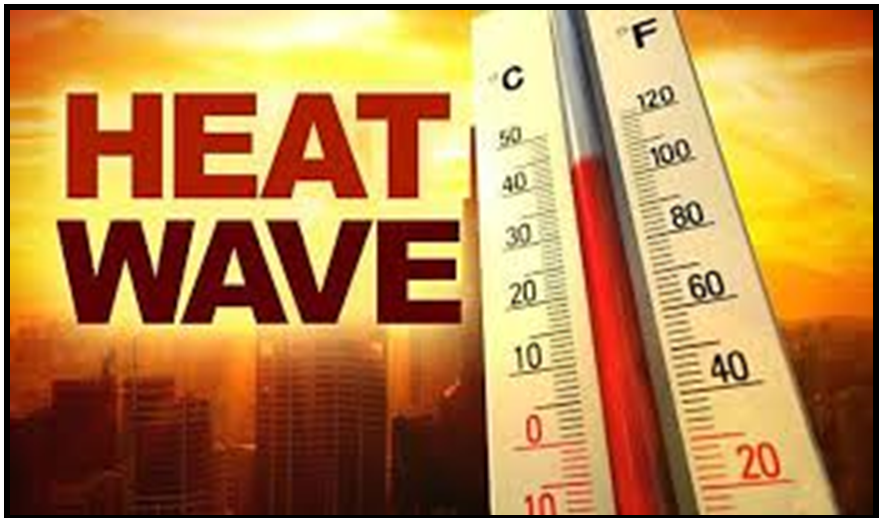HEATWAVES AS NATURAL DISASTERS
Syllabus:
- GS-3- Natural disasters , disaster management and related forces and actions in India
Focus :
- The article discusses the severe impact of heatwaves in North India, the legal and administrative framework for addressing natural disasters in India, the debate on classifying heatwaves as natural disasters, and the existing measures to mitigate heatwave impacts. It emphasizes the need for official recognition of heatwaves to ensure adequate funding and response mechanisms.
Source - ET
Heatwaves in North India
- Current Situation: North India is experiencing the longest stretch of a heatwave in the last 15 years.
- Impact: Over 100 deaths from heat-related illnesses have been reported from March 1 to June 18, although this is likely under-reported.
Classification of Heatwaves as a Natural Disaster
- Legal Framework: The National Disaster Management Act (NDMA) governs the roles of the Centre and States in responding to natural disasters.
- Current Recognized Disasters: Twelve disasters are notified in the Guidelines on Constitution and Administration of the State Disaster Response Fund (SDRF) and National Disaster Response Fund (NDRF), including cyclone, drought, earthquake, fire, flood, tsunami, hailstorm, landslide, avalanche, cloudburst, pest attack, frost, and cold waves.
- Exclusion of Heatwaves: Heatwaves are not currently included in the list of recognized natural disasters.
Role of the Finance Commission
- 15th Finance Commission: The commission did not expand the list of notified disasters, stating that the existing list covered the needs of the States adequately.
- Appeals from States: States have appealed to the Finance Commission to include heatwaves as a natural disaster to become eligible for more funds.
- Current Provisions: States can use up to 10% of the annual fund allocation of the SDRF for providing immediate relief to victims of disasters not listed, based on local context.
- 16th Finance Commission: Headed by economist Arvind Panagariya, it may review fresh requests from States regarding the inclusion of heatwaves.
About Disaster Management Act , 2005
|
Rising Heatwave Deaths in India
- Trend: Heatwave deaths decreased from 1,127 in 2017 to 374 in 2021. In 2022, 33 deaths were reported; in 2023, none; and in 2024, at least 100 have been confirmed.
- Reporting Challenges: Many heatwave-related deaths go unreported due to co-morbidities and varying definitions of heatwaves.
- Vulnerable States: Andhra Pradesh, Odisha, Telangana, Gujarat, and Rajasthan frequently report the most casualties from heatwaves.
- Official Reporting: State health departments are responsible for reporting heatwave-related illnesses and deaths to the Centre.
Defining a Heatwave
- Criteria:Temperatures above 45 degrees Celsius or temperatures 4.5 degrees or more above the normal for any place.
- Regional Variations: Even mid-30s temperatures can be considered heatwaves in Himalayan states if they are significantly above normal.
- Medical Guidelines: Guidelines exist to help doctors declare or rule out heatwave illnesses, but these are often applied unevenly.
Measures in Place to Address Heatwaves
- Heat Action Plans (HAPs): State, district, and city-level HAPs have been prepared to address rising heatwave frequencies.
- Collaboration: The NDMA and the India Meteorological Department are working with 23 States to develop HAPs.
- Components of HAPs: Include a heat profile of the region, historical heatwave data, temperature trends, land surface temperature, vulnerability assessment, and a response plan.
Importance of Recognizing Heatwaves as Natural Disasters
- Funding and Response: Official recognition would ensure more funds and systematic responses to heatwaves.
- Need for Change: The increasing frequency and severity of heatwaves necessitate their inclusion in the list of recognized natural disasters for effective management and mitigation.
Source:The Hindu
Associated Article :
https://universalinstitutions.com/category/mains-capsule/gs-3-mains-capsule/disaster-management/
Mains Practice Question :
GS-3
“Discuss the increasing impact of heatwaves in India and the current legal and administrative frameworks in place to address natural disasters. Evaluate the need for including heatwaves in the list of notified natural disasters and the challenges associated with this inclusion.”(250 words)




